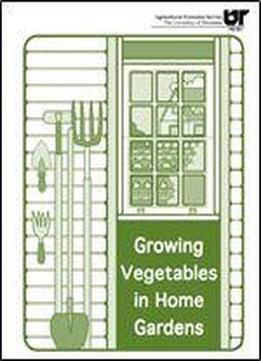
Growing Vegetables In Home Gardens
by David W. Sams /
2010 / English / PDF
5.5 MB Download
Introduction
Gardening can be highly rewarding, but it is notwithout problems and efforts. A successful garden requires a good site, careful planning, good management and considerable hard work. Insects, diseases and weeds require control measures. Acidic, infertile, poorly drained or sandy soil may have to be improved. Shade and extremes of moisture and temperature are other problems that must be overcome for a garden to be successful.
For those willing to plan carefully and to perform timely gardening tasks, gardening can be very worthwhile. A vegetable garden can produce a steady supply of vegetables from spring to fall. These vegetables can be harvested at optimum maturity and eaten or preserved while fresh. Fresh vegetables may be higher in flavor and nutritive value and lower in cost than purchased vegetables, which may have been harvested several days earlier. Vegetable production provides healthful exercise and an interesting outdoor activity for the entire family.
Many gardeners feel the sense of accomplishment, selfsufficiency and security accompanying a successful garden are other significant rewards of gardening.
A site near the house makes it more convenient to care for the garden and to harvest vegetables. Water is available for transplanting and irrigation. Children or animals in the garden can be observed, and the garden may be protected from these and other potential problems.
Planning the Garden Planning the Garden Planning the Garden Planning the Garden Planning the Garden A garden plan will save time, space and money. Yields will be increased, as will the length of the harvest season.
Begin by making a scale drawing of your available garden area on graph paper. Divide the drawing into coolseason and warm-season vegetable planting areas.
Cool-season vegetables are those such as onions, cabbage, radishes and English peas. They require cool weather to grow and mature properly and can withstand some frost. Cool-season vegetables are planted in the early spring and again in the fall. Warm-season vegetables require warm weather to grow properly and are planted after the soil has warmed up. Frost will kill warm-season vegetables. Examples of warm-season vegetables include okra, sweet potatoes, cucumbers and tomatoes.











